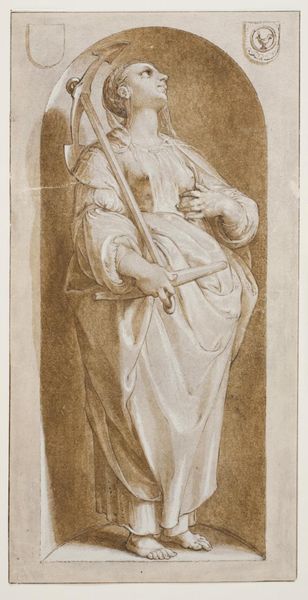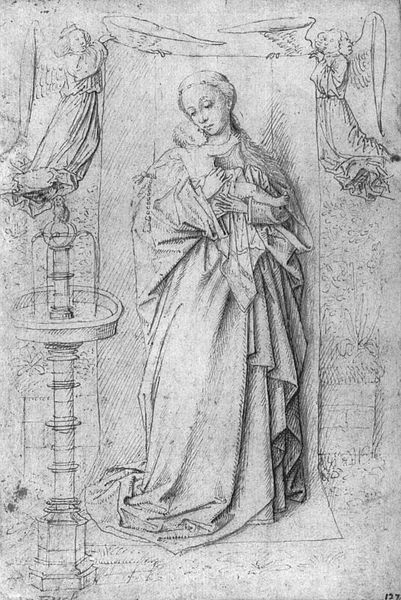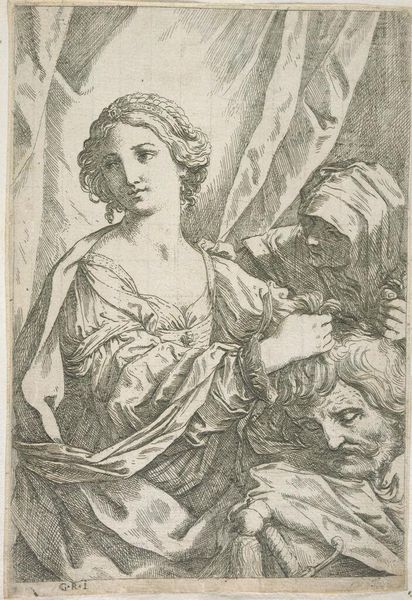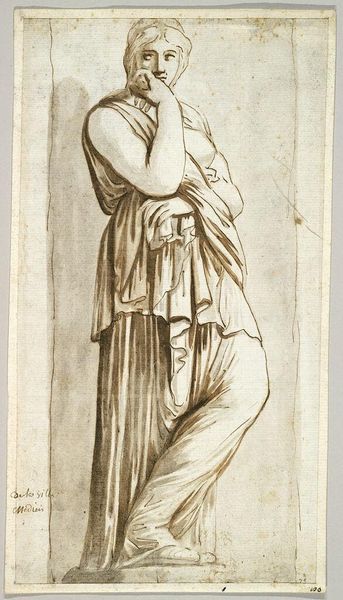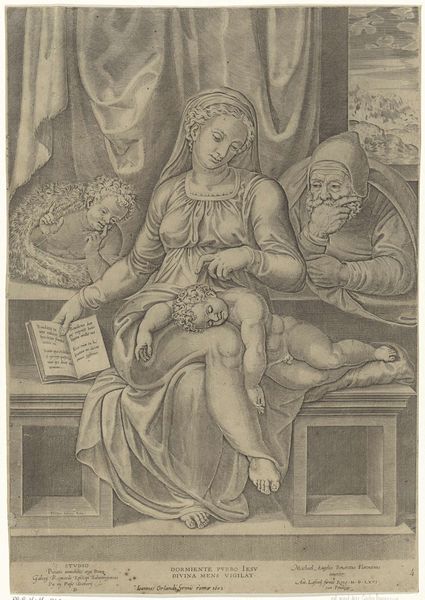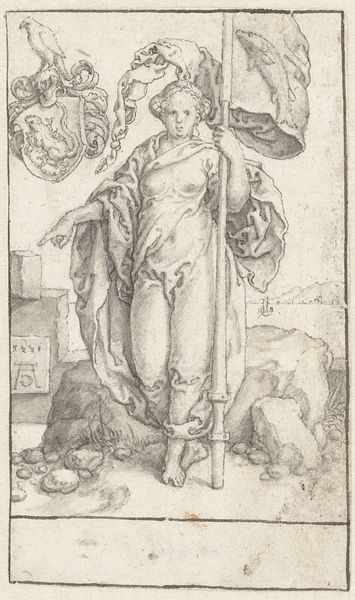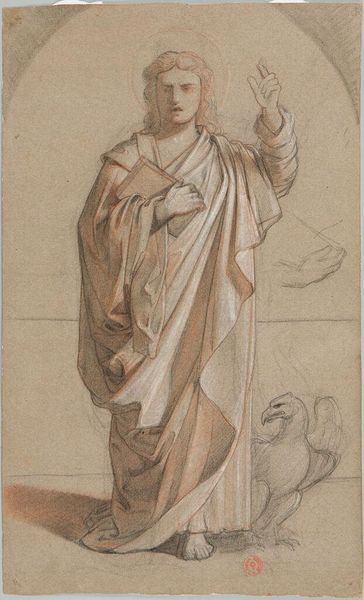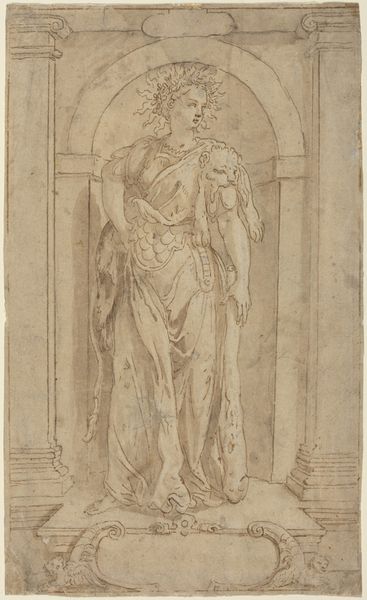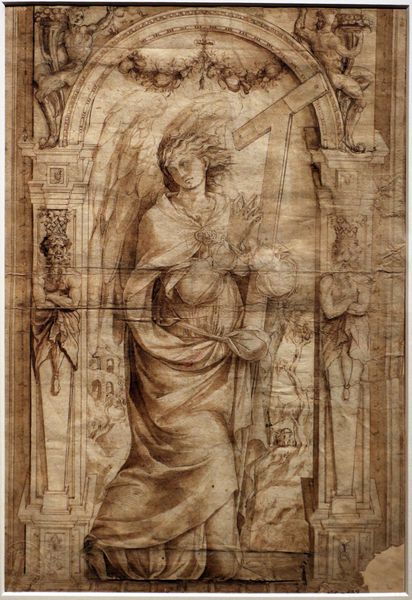
drawing, print, gouache, paper, ink, pencil, chalk, black-chalk
#
portrait
#
drawing
# print
#
gouache
#
classical-realism
#
charcoal drawing
#
figuration
#
paper
#
charcoal art
#
oil painting
#
portrait reference
#
ink
#
pencil
#
chalk
#
water
#
portrait drawing
#
history-painting
#
academic-art
#
black-chalk
Dimensions: 300 × 168 mm
Copyright: Public Domain
Editor: Here we have "Temperance," an undated drawing now at the Art Institute of Chicago. It seems to be made with chalk, gouache, ink, and pencil on paper. The sepia tones give it a certain warmth. How do you interpret this work? Curator: Let's look at this through a materialist lens. The drawing combines chalk, gouache, ink, and pencil - these materials themselves speak to different traditions of art making. The presence of gouache points toward a craft tradition used for vibrant decoration and design, colliding with the high-art associations of ink drawing and pencil sketching, used for preparatory studies by artists. How does this intermingling of the "high" and "low" impact our understanding? Editor: That’s interesting. I hadn't considered the different traditions embodied in the materials. So, the combination elevates "low" materials by presenting them within what appears to be academic-style artwork? Curator: Exactly! And the choice of paper – a relatively inexpensive material – furthers this dialogue. It forces us to consider the context of production. Was this piece meant to be a study, a finished work, or perhaps something in between, blurring those lines? Furthermore, this wasn't just a drawing created out of thin air; each material implies the investment of money to acquire raw goods, alongside time used to then refine into specialized media fit for making images. Editor: It does make you wonder about the artist’s intent and the intended audience. The materials create more complex interpretations than I first realized! Curator: Precisely. Analyzing the material choices opens up questions about artistic labor, the value we place on different art forms, and the societal structures that shape our understanding of art itself. These layers expose dynamics often missed if we only concentrate on composition or iconography. Editor: Thank you! Now, I'm much more curious about the stories that can be told by understanding these choices!
Comments
No comments
Be the first to comment and join the conversation on the ultimate creative platform.
